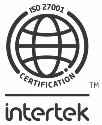Buy Versus Build: It's No Longer a Binary Decision

An article from VP of Sales, Geoff Keast
Insurance is a decision business, and that business can’t operate without the right technology to effectively manage the information driving it. This makes determinations about incorporating technology – either pre-built (buy) or self-built (build) – critical to the business’ ability to not only operate efficiently but compete in an increasingly digital environment.
Gartner, Inc., a research and consulting firm that advises IT and other technology businesses, projects that global information technology spending will total $5.1 trillion in 2024, an 8% increase from 2023. In particular, the firm predicts spending on software will increase 13.8% in 2024 to just over $1 trillion. This follows increases of about 2% per year dating back to 2021.
I admit a bias toward no-code (self- or assist-to-build) customized software solutions; I think no-code technology offers insurers the most benefits and flexibility to meet their needs, otherwise I wouldn’t have joined INSTANDA. However, INSTANDA’s founders were once where many in the industry are today, looking to evaluate their options on a level playing field to make the best decisions possible. In this vein, I offer my views on the pros and cons of pre-built and self-built solutions so people can determine what makes the most sense for them and their companies.
Buying Tech Solutions
The Pros: Specialized Expertise, Veteran Vendors
Two big items that typically fall in the plus column for purchasing insurance technology include the wealth of functionality and the specialized expertise of certain vendors. This reduces the burden of needed technology proficiency on the part of the insurer. These ready-made solutions offer a menu of capabilities that can save time on development and implementation. Vendors who tailor their products to insurance – including certain lines of business or even customizing said tech to the insurer itself – often tout experience and guidance with troubleshooting, maintenance and upgrades where needed. These vendors know the insurance landscape. They understand basic industry standards and often partner with established players. They can navigate regulatory and standard operational issues that connect back to their offerings.
Depending on the customization level possible, buying a tech solution can be a perfect fit for many insurers as long as they remain focused on speed to market and experienced support. Importantly, vendors focused on the insurance space know how to help insurers scale while offering their customers a level of comfort and assurance on what is usually a significant purchase.
The Cons: Limited Customization, Poor Adaptability, Unfriendly Ecosystems, Hidden Costs
Some of the drawbacks of buying insurance technology stem from the challenges insurers faced in the 1990s when considering tech providers. These include limited customization or adaptability to change, being locked into the vendor’s technology ecosystem and little insight into the hidden costs of ownership.
The history of insurance technology adoption shows limitations among software developers, resulting in carriers and MGAs creating Frankenstein tech environments. These environments are loaded with workarounds, unnecessary redundancies, data that can’t be migrated and – ultimately – systems that can’t communicate with other systems.
These risks continue today when considering off-the-shelf solutions. Adapting these products requires the specialization of the vendor, adding time and cost to the original off-the-shelf pricing. While the initial purchasing cost for pre-built software may offer a lower barrier to entry than a fully customized software solution, by the second or third year of ownership, these pre-built solutions soon reveal hidden costs that were not factored into the upfront investment. These include ongoing management, service, maintenance and upgrade costs, and costs related to adapting the software as business realities change. This is a challenge that will require a specialist from the vendor to develop code – if possible – to address the needed workarounds.
The Reality: No-code Breaks the Binary Choice Conundrum
Because no-code platforms do not require coding expertise, non-technical staff can quickly create, modify and version products and platforms, allowing businesses to adapt to market demands, as well as deploy new products swiftly. This means building your own technology through a no-code platform places you in complete control. You have complete autonomy to customize the tech to meet your needs and address market trends or regulatory changes.
While no-code software is about as user-friendly as you can get in the world of technology, these products can still present a learning curve to non-technical individuals. As such, it’s necessary to invest time in training and self-guided, ongoing maintenance. And, of course, no-code does not mean no problems. No software is an infinite solution, and there may be instances when workarounds need to be developed. The good news is you have a higher likelihood of being able to incorporate other tools and technology platforms into a no-code tech environment than that of a pre-built, closed ecosystem solution. Thus, you can potentially have the best of both worlds with a buy-it, no-code tech solution that can adapt to pre-built tech products.
Building Tech Solutions
The Pros: Lower Up-Front Cost, Speed to Market, Adaptability, No Tech Proficiency Required, Customizable
There are several advantages to building a custom technology solution for insurers. The first is the initial cost of ownership. In some instances, the upfront costs of building a tailored solution may be lower than an off-the-shelf solution. It’s important to account for ongoing costs as they can stack up over the years (IT staff salaries, upgrade costs, ongoing maintenance and training requirements, etc.). Self-built solutions also have the advantage of building the exact workflow and processes you need.
Speed to market, as well as the speed of adaptability, are additional positives in building a tailored technology solution.
The Cons: Training, Possible Need for Work Arounds, Scalability
However, there are considerations to factor into the customization of insurance technology.
Another consideration – and a good problem to have – is growth. As your business grows and becomes more complex, scalability can become an issue as you find your business handling more information, more users and more data. When building solutions from scratch, insurers often need to recreate insurance process functionality, often replicating for each product they create. This fosters a sense of having to reinvent the wheel each time.
The Grey Space In Between
Between purchased and customized insurance technology there is a freewheeling grey space that offers a bit of both worlds. These solutions offer their own benefits and drawbacks. Many of these tech tools live in the workflow visualization space, and few are built specifically for insurance. While they may help in building out workflows and product solutions, the underlying technology solutions must still be built – often from the bottom up. There is also the risk of repeated visits back to the drawing board with each new product line or state. This inhibits both speed to market and the insurer’s ability to scale.
Other development tools are designed to help accelerate a developer's speed to market and offer better connectivity with various technology ecosystems, but again, these solutions are often industry-agnostic. As such, insurers are once more left to build their own insurance tech solutions.
Conclusion
There is no single, one-size-fits-all solution for everyone. For some insurers, off-the-shelf software might be an ideal match, until it isn’t. Building a solution designed around how the business operates and how it intends to grow can be extremely attractive for those who can visualize where their business is and where it could be in 5 to 10 years. In either case, these decisions should be made with caution and only after evaluating both categories to determine how each option aligns with your business.





